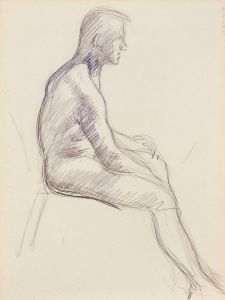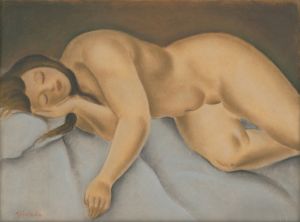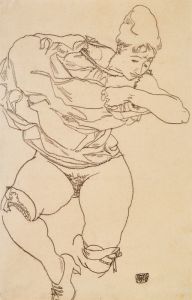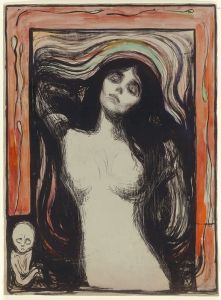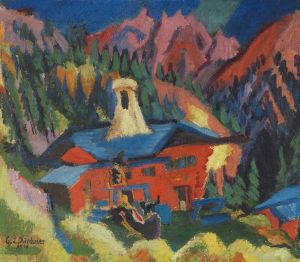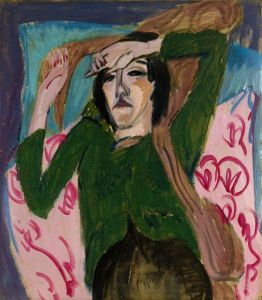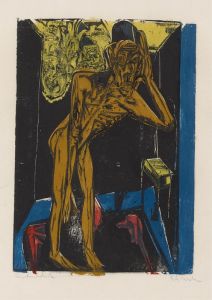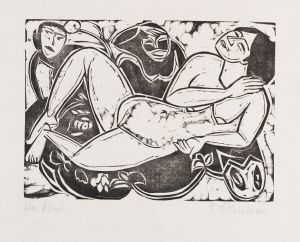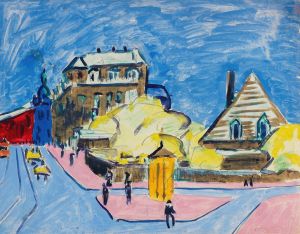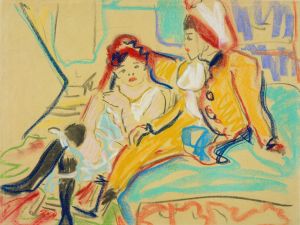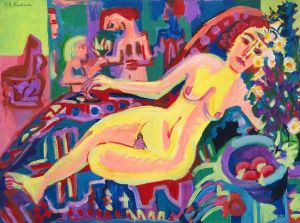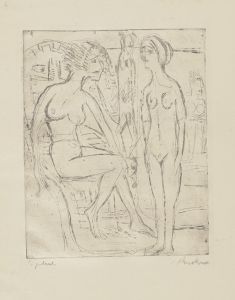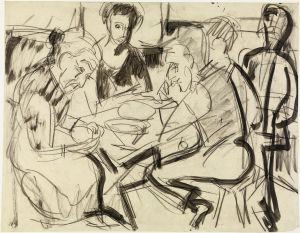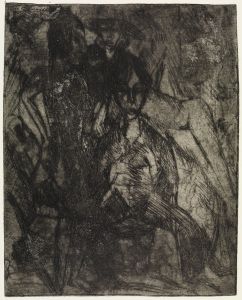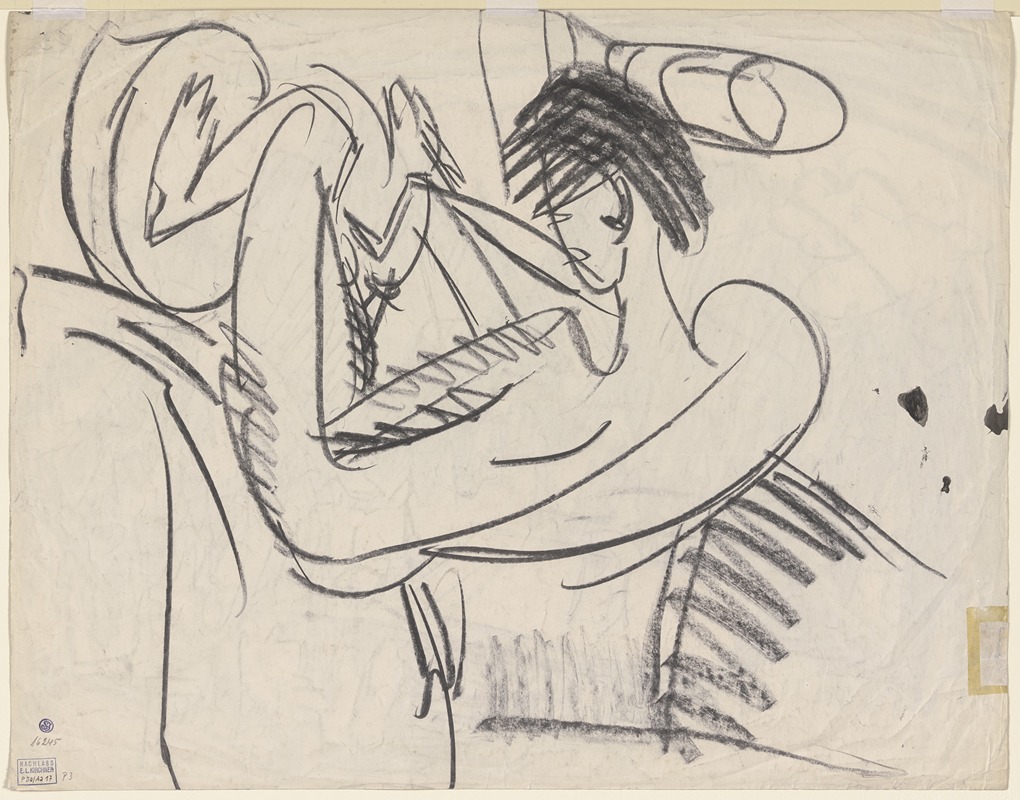
Sitting female nude
A hand-painted replica of Ernst Ludwig Kirchner’s masterpiece Sitting female nude, meticulously crafted by professional artists to capture the true essence of the original. Each piece is created with museum-quality canvas and rare mineral pigments, carefully painted by experienced artists with delicate brushstrokes and rich, layered colors to perfectly recreate the texture of the original artwork. Unlike machine-printed reproductions, this hand-painted version brings the painting to life, infused with the artist’s emotions and skill in every stroke. Whether for personal collection or home decoration, it instantly elevates the artistic atmosphere of any space.
Ernst Ludwig Kirchner was a prominent German expressionist painter and one of the founding members of the influential art group Die Brücke (The Bridge), which played a crucial role in the development of modern art in the early 20th century. Kirchner's work is characterized by its bold use of color, dynamic compositions, and a focus on the human figure, often exploring themes of modernity, urban life, and the human condition.
"Sitting Female Nude" is one of Kirchner's works that exemplifies his interest in the human form and his distinctive expressionist style. Although specific details about this particular painting are limited, it is consistent with Kirchner's broader oeuvre, which frequently included nudes as a central subject. Kirchner's nudes are notable for their raw, unidealized portrayal of the human body, often depicted with elongated forms and vibrant, non-naturalistic colors that convey emotion and psychological depth.
Kirchner's approach to the nude was influenced by his desire to break away from traditional academic representations and to explore more primal and direct expressions of human experience. This was in line with the goals of Die Brücke, which sought to create a new artistic language that bridged the past and the future, drawing inspiration from non-Western art forms, as well as the works of Vincent van Gogh and Edvard Munch.
In "Sitting Female Nude," Kirchner likely employed his characteristic technique of using bold, expressive brushstrokes and a vivid color palette to capture the essence of the subject. His nudes often reflect a sense of immediacy and spontaneity, as if capturing a fleeting moment in time. This approach was part of Kirchner's broader artistic philosophy, which emphasized the importance of direct observation and emotional resonance over meticulous detail and realism.
Kirchner's work, including his nudes, was deeply affected by the socio-political context of his time. The early 20th century was a period of significant upheaval and change, with rapid industrialization, urbanization, and the looming threat of war. These themes are often reflected in his art, which can be seen as both a response to and a critique of modern society.
Throughout his career, Kirchner faced numerous challenges, including the impact of World War I, during which he served as a soldier and subsequently suffered a mental breakdown. His later years were marked by struggles with health and the rise of the Nazi regime, which condemned his work as "degenerate art." Despite these difficulties, Kirchner continued to produce art until his death in 1938.
"Sitting Female Nude" remains an important example of Kirchner's contribution to expressionism and his exploration of the human figure. While specific details about this painting may be scarce, it is representative of Kirchner's innovative approach to art and his enduring influence on the development of modernist aesthetics.





